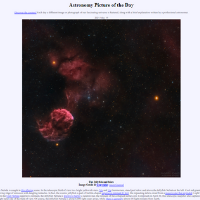Visualizing Space with NASA's Brian Day!
NASA has always excelled at helping us visualize the Cosmos. Brian Day works at the Solar System Exploration Research Institute, one of the premier groups at NASA that use data from a variety of space probes, telescopes, and observatories from around the world to enable us to explore solar system objects like the Moon, Titan, Mercury and more.
About Brian Day
Brian Day is part of the NASA Speaker Bureau andthe Lead for Citizen Science and Community Development at SSERVI (Solar System Exploration Research Virtual Institute).Day has been involved with some groundbreaking projects at NASA. Some of these include beingtheE/PO Lead for NASA’s LCROSS lunar impactor missionwhich was the mission thatdiscovered deposits of water ice at the Moon’s South Pole. Day also served as the Education/Public OutreachLead for NASA’s Lunar Atmosphere and Dust Environment Explorer (LADEE) mission to the Moon and has been a part of more missions!Currently, Day acts as SSERVI’s project manager for NASA’s Lunar Mapping and Modeling Portal. Listen to our latest episode now to learn more about upcoming lunar missions and more!
Time Stamps for Visualizing Space with NASA’s Brian Day
3:01 – Brian intro and learning what Brian does atNASA
5:00 – ARTEMIS and other initiatives to return to the Moon
7:12 – Science missions related to the Moon landing missions
8:27 – CLPS (Commercial Lunar Payload Services)
12:10 – Going back to the Moon in a sustainable way
14:07 – Plans with the ARTEMIS mission
15:27 –AboutSSERVI (Solar System Exploration Research Virtual Institute)
20:51 –Collaborating internationally and with different scientific fields
23:50 – Brian’s primary project at SSERVI: NASA solar system treks
25:43 – Eyes on the solar system app by NASA featuresand trek
34:15 – Working with the amateur astronomy community
39 – NASA and image processing
40:21 – What amateur astronomers bring to the table for NASA
43 –Discoveries about the Moon andcurrent projects in queue
53:08 – What the Moon tells us about Earth
If you could send anything to theMoon, what would it be? Let us know in the comments!












